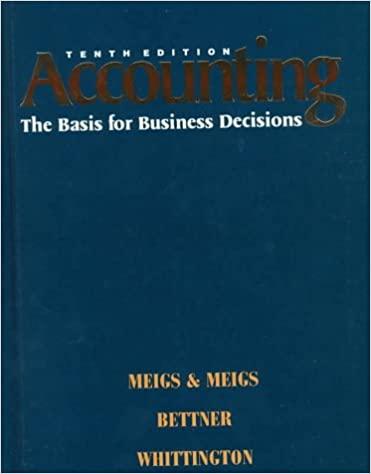Answered step by step
Verified Expert Solution
Question
1 Approved Answer
It is a principle of costing that all abnormal expenses and losses should not be included in costs and as such wages paid for abnormal

It is a principle of costing that all abnormal expenses and losses should not be included in costs and as such wages paid for abnormal idle time should not form part of the cost of production. Hence it is debited to Casting Profit and Loss Account. Over Time: - It is the work done beyond the normal working period in a day or week. For overtime done, the workers are given double the wages for the overtime done. The additional amount paid on account of overtime is known as overtime premium. Overtime increases the cost of production and should not be encouraged as it has the following disadvantages. 1. Overtime is paid at higher rate. 2. Overtime is done at late hours when workers have become tired and efficiency will it be as much as during the normal working hours, 3. Workers will develop the habit of working slowly during normal hours and complete the work using overtime to earn more wages. 4. Expenses like lighting, cost of supervision, and wear and tear of machines will increase disproportionately. Overtime should be recorded separately and thoroughly investigated to see that it is incurred only when genuinely required. The treatment of overtime depends on the situation. If overtime is incurred for because of the sequence of jobs, then normal wages is charged to labour cost for the overtime also but if it is a rush job, then the overtime wages is added to the cost of labour. On the other hand if overtime arises due to any abnormal reason like breakdown of machinery or power failure, avertime premium is excluded from the cost of production and is debited to the Costing Profit and Loss Account 545 Calculate the normal and overtime wages payable to a workman from the Illustration following data: Days Hours Worked Monday Tuesday Wednesday Thursday Friday Saturday Total Normal Working Hours Normal rate Overtime rate 8 hrs. 10 hrs. 9 hrs. 11 hrs. 9 hrs. 4 hrs. 51 hrs. 8 hours per day Re1 per hour up to 9 hours in a day at single rate and over 9 hours in a day at double rate; or up to 48 hours in a week at single rate and over 48 hours at double rate whichever is more beneficial to the workman
Step by Step Solution
There are 3 Steps involved in it
Step: 1

Get Instant Access to Expert-Tailored Solutions
See step-by-step solutions with expert insights and AI powered tools for academic success
Step: 2

Step: 3

Ace Your Homework with AI
Get the answers you need in no time with our AI-driven, step-by-step assistance
Get Started


